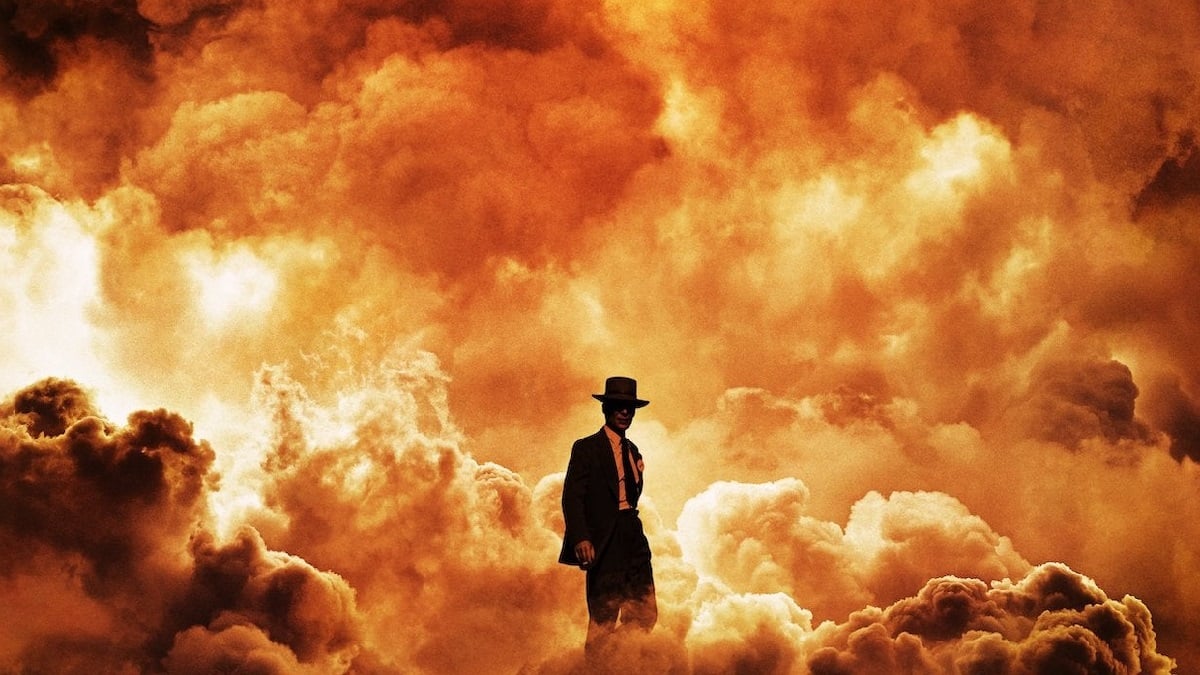
Christopher Nolan’s Oppenheimer has worked up quite a storm of controversy over its usage of the famous Bhagavad Gita line during an intimate scene with Cillian Murphy’s titular J. Robert Oppenheimer and Florence Pugh’s Jean Tatlock, but what is the true meaning behind the “destroyer of worlds” soliloquy, and why was the father of the atomic bomb obsessed with it?
The story of Oppenheimer depicts how one of the most infamous figures in the scientific world brought together a team of physicists and developed the first weaponized nuclear fission. From those early days in the Los Alamos complex to the historic Trinity Test and the World War aftermath, Nolan uncovers Oppenheimer’s life in a brilliantly profound and deeply tragic tapestry. And maybe that’s the main reason a particular scene in the biopic caught us all off guard.
Even the filmmaker’s most diehard gatekeepers couldn’t predict that he would plug the incredibly famous “I am become death, the destroyer of worlds” line in a context that had nothing to do with the quote itself. And let’s be fair, we were all expecting to see a reenactment of that bone-chilling Oppenheimer monologue in his solo film. We just didn’t assume it would come during that sexually charged moment with his paramour Jean Tatlock.
But what is the source of the “destroyer of worlds” line and what does it signify in the life of the person who gave humanity its deadliest weapon?
What is the “destroyer of worlds” quote in the Bhagavad Gita?

The Bhagavad Gita is a scripture in the Mahābhārata epic, which is one of the two main bodies of mythological and spiritual canons in Hinduism from ancient Indian traditions. In the Bhagavad Gita specifically, we sit through the enlightening conversations between a prince called Arjuna and his charioteer Lord Krishna, who in truth is an embodiment of Vishnu, one of the main deities in Hinduism.
Krishna urges Arjuna to see past the triviality of his current dilemmas and understand that his soul is forever, while the events of this day (on the Kurukshetra battlefield) are insignificant compared to the journey long past and the journey still ahead. Arjuna seeks to bear witness to Krishna’s real form, whereupon the deity transforms into a luminescent being with many mouths and eyes. Arjuna is dumbstruck with awe and terror, and it is here that he realizes the terrifying nature of the divine, and how short and pitiful humanity’s reach truly is compared to the well of infinity, that which defines the Mighty One.
After the Trinity Test, Oppenheimer immediately recalled the Bhagavad Gita, which he’d read in the original Sanskrit years before. “If the radiance of a thousand suns were to burst at once into the sky, that would be like the splendor of the Mighty One,” the line reads, and I think we hardly need to tell you the visual parallel between that description and an atomic explosion.
Oppenheimer depicts how his titular protagonist came to regret the day he set foot in Los Alamos, and it seems that the analogy between his creation and the Hindu philosophy that informed his worldview continued to haunt him to the end of his days.
It was years later, nearly a decade after the abominable bombings of Hiroshima and Nagasaki, that Oppenheimer once again recalled the Bhagavad Gita and quoted it in his famous 1965 interview:
“We knew the world would not be the same. A few people laughed, a few people cried… most people were silent. I remembered the line from the Hindu scripture, the Bhagavad Gita. Vishnu is trying to persuade the prince that he should do his duty and to impress him, takes on his multi-armed form and says, ‘Now I am become Death, the destroyer of worlds.’ I suppose we all thought that, one way or another.”
Oppenheimer ends on a very somber thought, with its main character implying that humanity might now be on a road that leads to inevitable ruin, that his creation might itself be the chain reaction that brings about the end times.
78 years have passed since that fateful day when the first atomic bomb detonated over the Jornada del Muerto desert, and if nothing else, humanity has held on to an incredible determination to avoid that doom. But how long will we be able to resist the temptation of the divine?
from Movie News | Movie Reviews | Movie Trailers https://ift.tt/UczxRPE



0 comments: